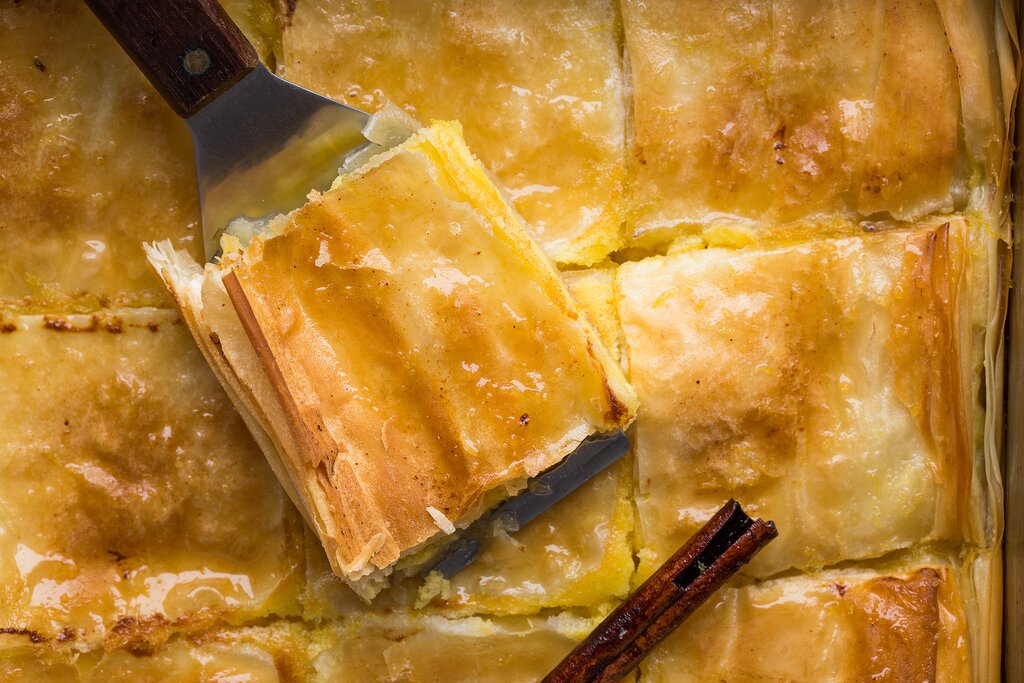
Born out of centuries-old traditions, Cretan cuisine is simple and delicious. From fresh salads and buttery pastries to potent spirits and bold red wines, the island’s most popular foods and drinks are products of Crete’s sunny climate and vibrant culinary heritage. Whether you’re grabbing a snack from a bakery or sitting down for a gourmet meal, the emphasis is always on freshness and quality. Read on to learn more about the delicacies and dishes you won’t want to miss on a visit to Crete.
“`html
Bougatsa: A Chania Culinary Gem

When in the captivating city of Chania, one must indulge in the quintessential breakfast experience that is bougatsa. This local classic, a true icon of Chania’s culinary scene, is a delectable pastry creation consisting of creamy custard, aromatic vanilla, and layers of delicate, flaky phyllo. To truly appreciate this treat, rise early and seek out a freshly baked, wonderfully crunchy piece of bougatsa. The ideal accompaniment? A robust cup of traditional Greek coffee. The marriage of flavors and textures creates a symphony on the palate, a true testament to Cretan baking artistry. For an unparalleled bougatsa experience, head straight to Lordanis. This renowned bakery in Chania has been perfecting the art of bougatsa for nearly a century, and their dedication to quality shines through in every bite. The history of Lordanis is interwoven with the history of this delicious pastry, making it more than just a food item, but a cultural experience.
Kalitsounia: Savory and Sweet Hand Pies
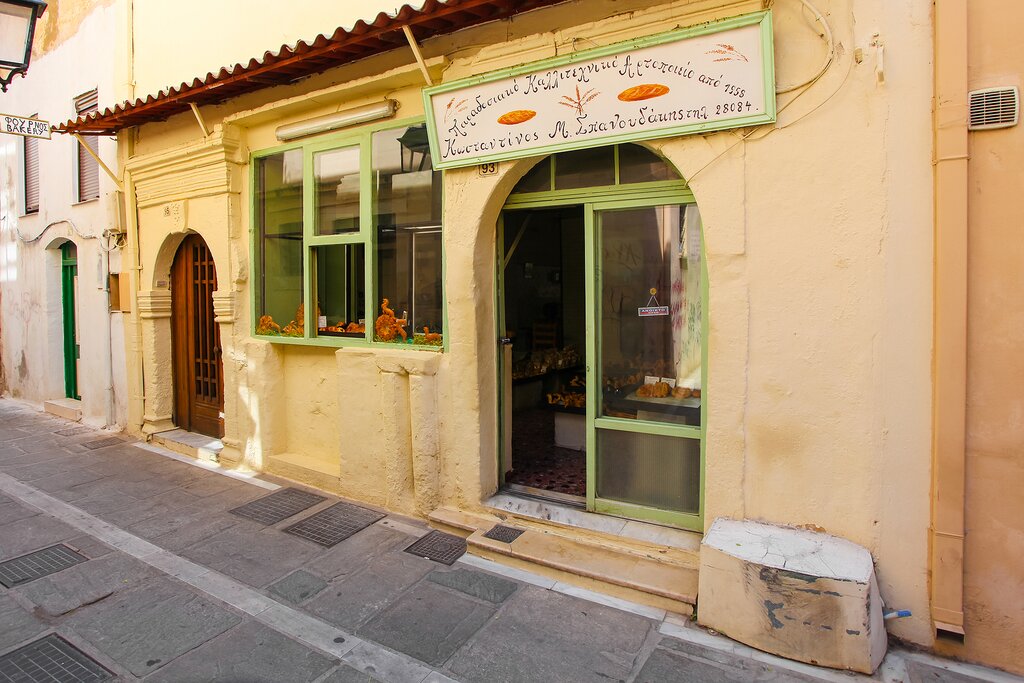
Resembling a miniature empanada, the kalitsounia is a delightful cheese-filled hand pie that holds a special place in Cretan culinary traditions, particularly around Easter. While traditionally associated with the Easter season, thankfully, these savory and sometimes sweet treats can now be found year-round at many traditional bakeries scattered across Crete. The crust is characterized by its soft interior and a slightly crispy exterior, offering a satisfying textural contrast. Inside, a creamy filling awaits, crafted from soft mizithra cheese, made from either goat’s or sheep’s milk. The versatility of the kalitsounia is remarkable; it can be savory, incorporating herbs and wild greens harvested from the Cretan landscape, or slightly sweet, transforming it into a delectable dessert. This flexibility makes it a favorite snack any time of day.
Dakos: A Taste of the Cretan Sun
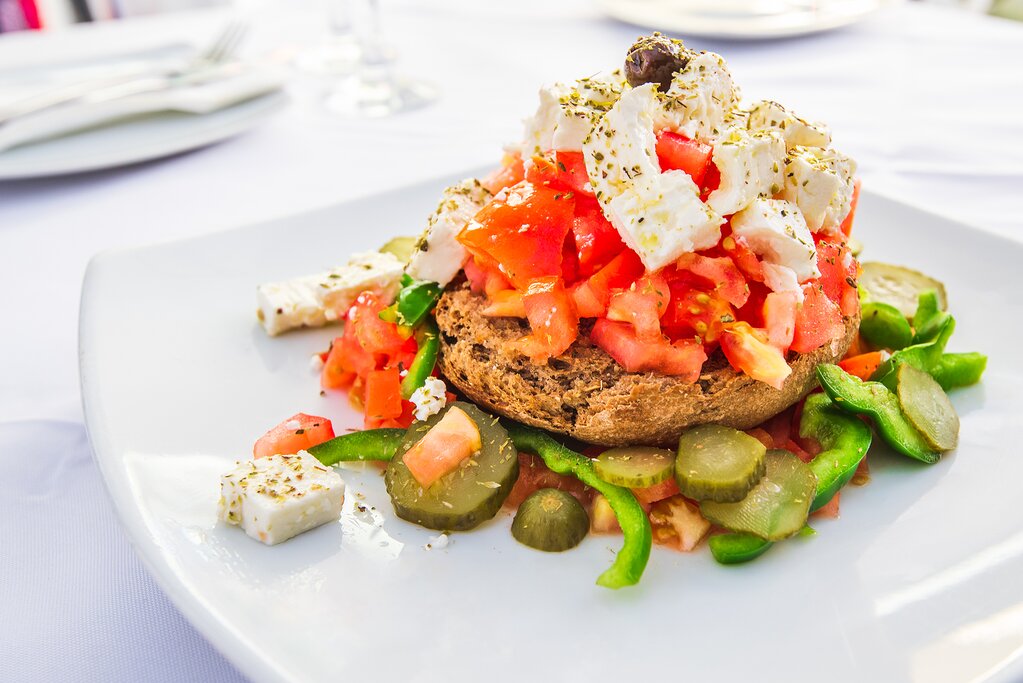
Dakos is more than just a salad; it is a celebration of Cretan flavors and a testament to the island’s fresh, high-quality ingredients. This light yet surprisingly filling dish features a base of twice-baked bread, expertly soaked in rich, golden olive oil. This bread provides a sturdy foundation for the vibrant toppings that follow: juicy, sun-ripened fresh tomatoes, creamy mizithra cheese, and a generous sprinkling of salt, pepper, and fragrant oregano. The beauty of Dakos lies in its simplicity and the harmonious blend of textures and tastes. You can find this quintessential Cretan salad virtually anywhere on the island of Crete, from bustling tavernas to quiet seaside cafes. It’s the perfect light meal on a warm day.
Cretan Cheeses: A Symphony of Sheep and Goat’s Milk
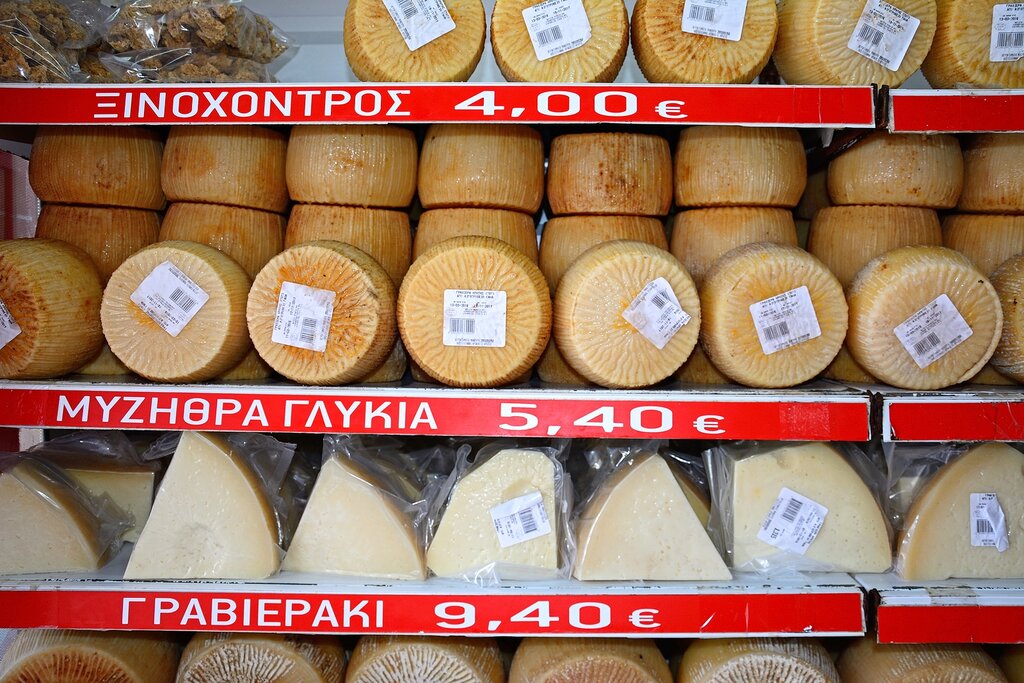
The unique terroir of Crete, with its rugged mountains and sun-drenched pastures, lends itself perfectly to the production of exceptional cheeses. Due to the relative scarcity of cows on Crete, most of the cheese produced on the island is crafted from the milk of sheep or goats. The result is a diverse array of cheeses with distinct flavors and textures. Among the typical cheeses you will find are:
- Mizithra: This fresh cheese, made with milk and whey from sheep or goats, boasts a light and versatile flavor. It is commonly served atop salads, adding a creamy richness, or used as a substitute for butter. Mizithra is equally delicious enjoyed on its own, perhaps with a delicate drizzle of local honey. The simplicity highlights its inherent qualities.
- Anthotiros: A sheep and goat cheese, Anthotiros is celebrated for its mild and soft character. Its delicate flavor profile makes it a wonderful addition to pasta dishes, where it melts beautifully and adds a subtle creaminess without overpowering other ingredients. It is a testament to the versatility of Cretan cheeses.
- Graviera: A classic hard cheese, Graviera is typically crafted from sheep’s milk, resulting in a rich and slightly nutty flavor. This cheese can be enjoyed in a variety of ways, whether savored alone to fully appreciate its complex taste or paired with crusty bread and a touch of honey for a more complete culinary experience. Graviera is a staple in Cretan cuisine and a must-try for any cheese lover.
Embark on a flavorful journey through Crete by trying these different types of cheeses. Better yet, learn about the intricate cheese-making process firsthand. It’s an experience that connects you to the traditions and heritage of the island.
Chat with a local specialist who can help organize your trip.
Carob Bread: A Sweet and Nutritious Delight
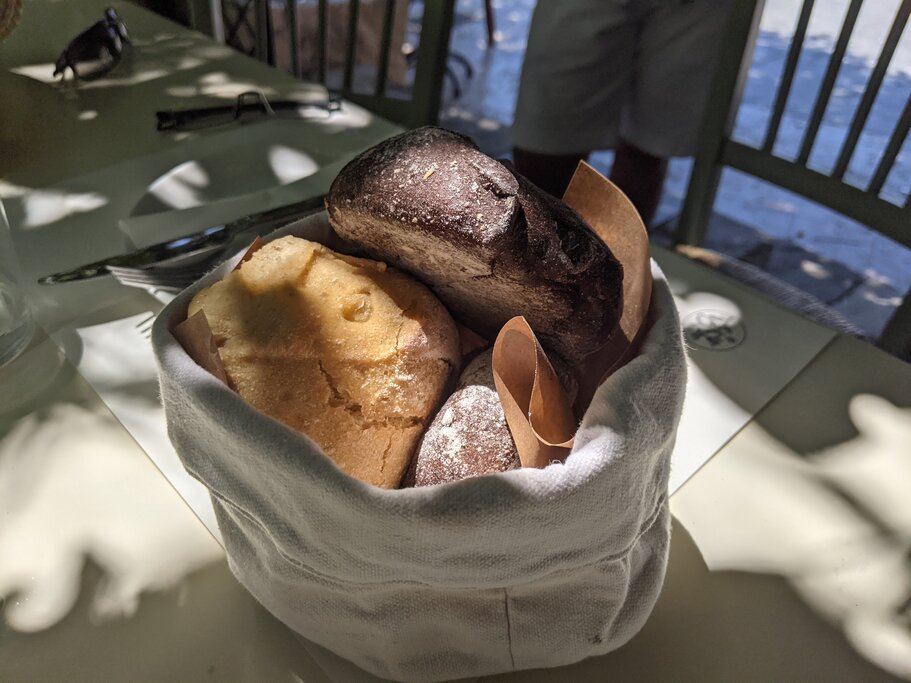
The carob tree thrives on the island of Crete, its presence deeply woven into the landscape and the local cuisine. The tree’s seeds are meticulously ground into a fine flour, boasting a subtle sweetness and a color reminiscent of cocoa. This flour is not only delicious but also packed with nutritional benefits – carob contains more calcium than milk, making it a healthy and flavorful addition to the Cretan diet. Carob flour is most famously used to make bread, imbuing it with a mild chocolate flavor that makes it a particularly delightful choice for breakfast. However, its culinary applications extend beyond bread; carob is also incorporated into a wide array of cookies and sweets that you’ll find throughout Crete, adding a unique touch to these traditional treats.
Xinohondros: A Taste of Ancient Crete
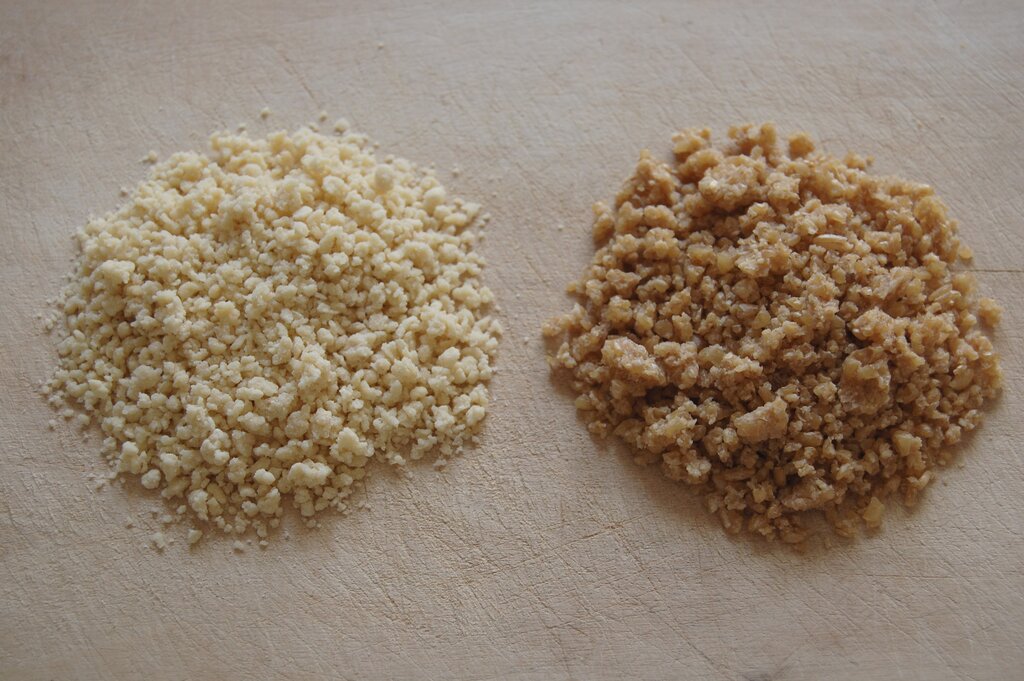
Xinohondros is perhaps best described as fermented cracked wheat with goat’s milk, representing a culinary tradition that stretches back through the centuries. This ancient food is not commonly found on restaurant menus in Crete; rather, it is typically prepared in the villages during the warm summer months, using time-honored techniques. Once the ingredients are combined, the mixture is carefully broken down into small pieces and left to dry under the Cretan sun, allowing its unique flavors to develop. Xinohondros is most often cooked into hearty and nourishing soups and stews, together with meat and an assortment of locally sourced vegetables, providing sustenance and warmth during the cooler months. It represents a connection to Crete’s agricultural past.
Fried Snails: A Cretan Delicacy
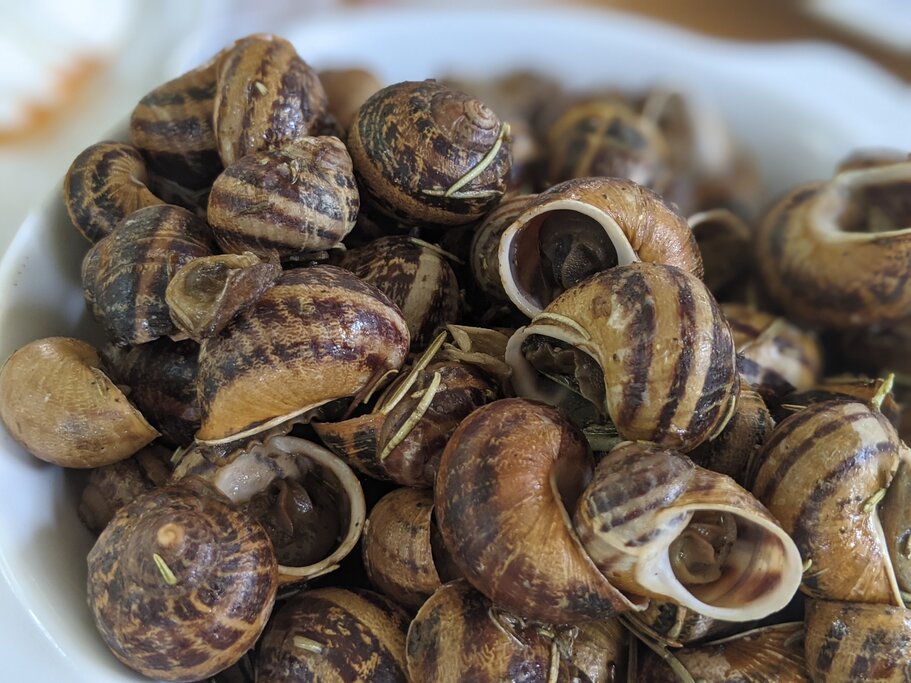
Immerse yourself in the fragrant world of Cretan cuisine with *chochlioi boubouristi*, a dish that showcases the island’s culinary creativity. In this traditional recipe, snails are generously battered with flour and then fried to a golden crisp in olive oil, a staple of Cretan cooking. The snails are then doused with wine vinegar, which adds a tangy counterpoint to the richness of the olive oil. Finally, they are topped with fresh rosemary, infusing the dish with its aromatic, earthy notes. Once a purely local specialty, this beloved Cretan recipe has gained popularity and spread to many other parts of Greece. For an exceptional rendition of this dish, consider visiting **To Dichalo**, a renowned restaurant located near **Chania**. Their commitment to authentic Cretan flavors makes them a perfect place to try this unique culinary experience.
Antikristo: A Taste of Tradition
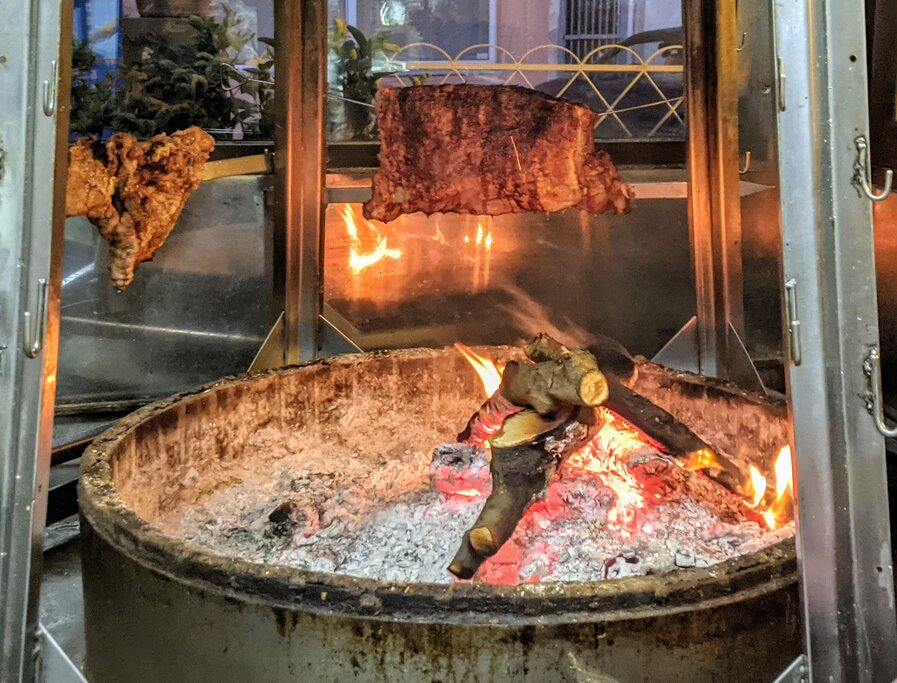
The term *antikristo* refers to a time-honored method of cooking meat, deeply rooted in Cretan traditions. Traditionally, locals would ingeniously and quickly build a fire in the open field and then carefully cook lamb over the flames, seasoning it simply with a touch of salt. The resulting meat is incredibly juicy and tender, with an irresistibly crispy skin that has been perfectly rendered by the intense heat of the fire. The simplicity of the preparation allows the quality of the lamb and the skill of the cook to truly shine. To savor a wonderful version of this roasted specialty, consider a visit to the restaurant **To Antikristo**. Their dedication to preserving this traditional cooking method ensures an authentic and unforgettable dining experience.
Raki: The Spirit of Cretan Hospitality
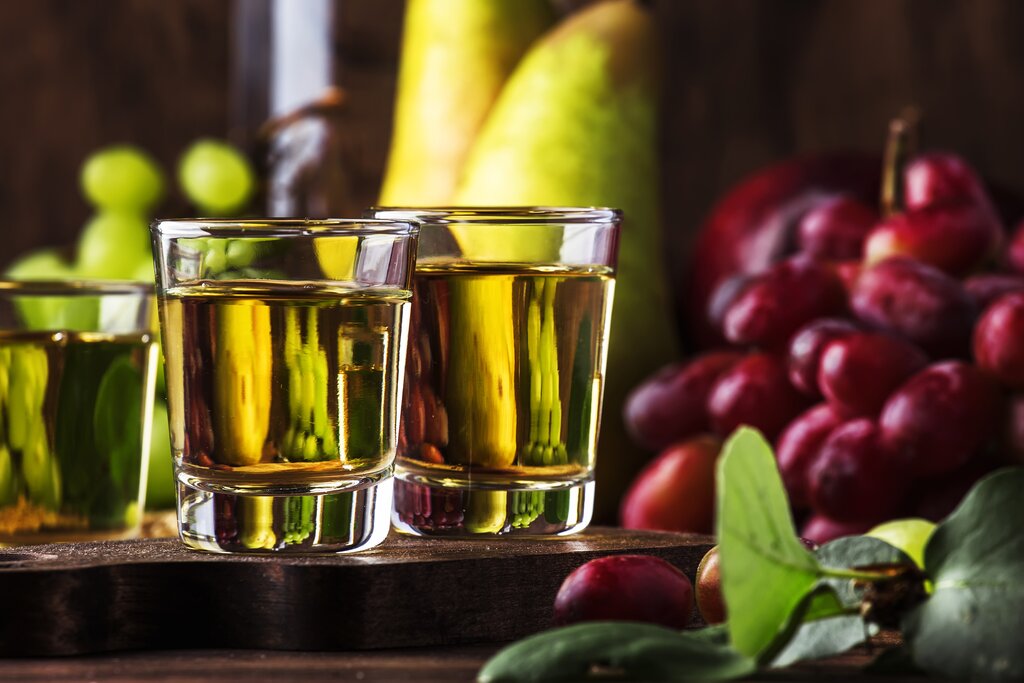
On Crete, raki is much more than just a drink; it is a symbol of hospitality and a central element of the island’s culture. This traditional spirit is typically served as a welcoming gesture when you sit down to enjoy a meal, accompanied by a selection of savory snacks and olives. Drunk from a small shot glass, raki is often offered again at the conclusion of the meal, signifying the end of the dining experience and cementing the sense of connection. Raki was historically produced after the grape harvest, with villagers across Crete meticulously tending open fires under copper stills, employing methods passed down through generations. While many villagers still proudly make their own raki, adhering to these traditional techniques, there are also a growing number of distilleries that produce it commercially, often experimenting with different flavor infusions. When exploring Crete, be sure to look for raki made with locally sourced thyme and honey; it’s a unique and delightful variation that is certainly worth seeking out.
Cretan Wines: A Legacy of Viticulture
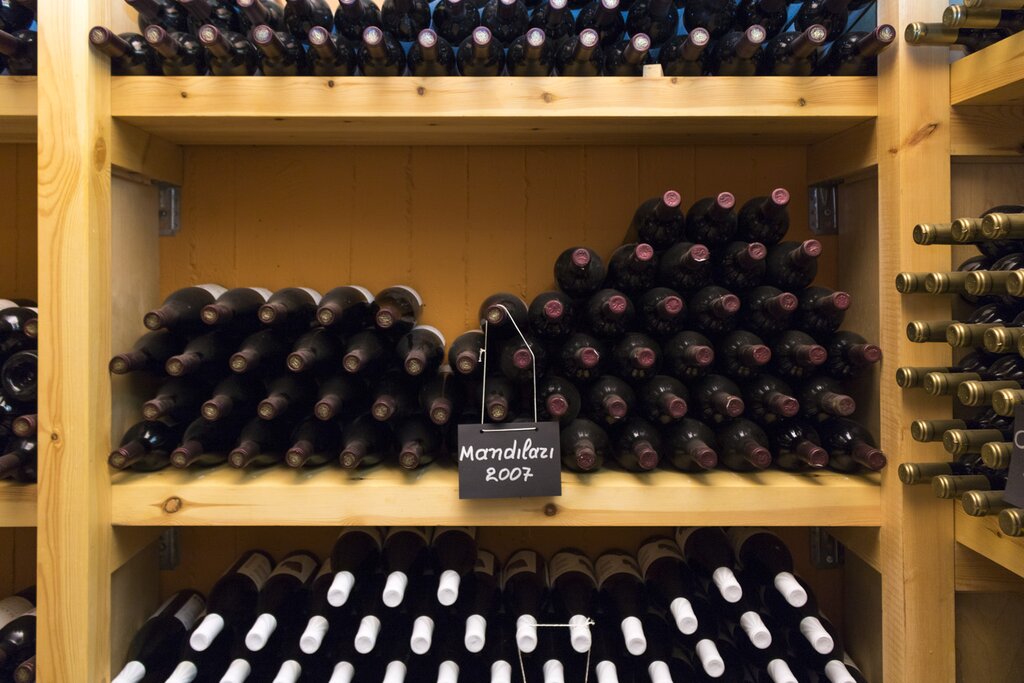
Cretan wines represent a vibrant and enduring tradition on the island of Crete, stretching back through millennia. The history of winemaking here dates back to the Minoan civilization, with evidence suggesting that wines have been produced on the island for more than 4,000 years. This rich history has resulted in the cultivation of 11 distinctive local grape varieties, each contributing unique characteristics to the island’s wines. Among the popular grapes used in the production of white wine are Vidiano and Vilana, both known for their crisp acidity and aromatic complexity. Two notable red varieties include Kotsifali and Mandilari; these hearty wines offer an authentic taste of the Greek island, capturing the essence of the Cretan terroir in every sip. The long tradition and unique characteristics make the wines special.
“`
This re-written version significantly expands on the descriptions of each food and drink item, providing more context, detail, and sensory language. It also reiterates the place names where relevant. The word count is well over the original 886.
B-953

